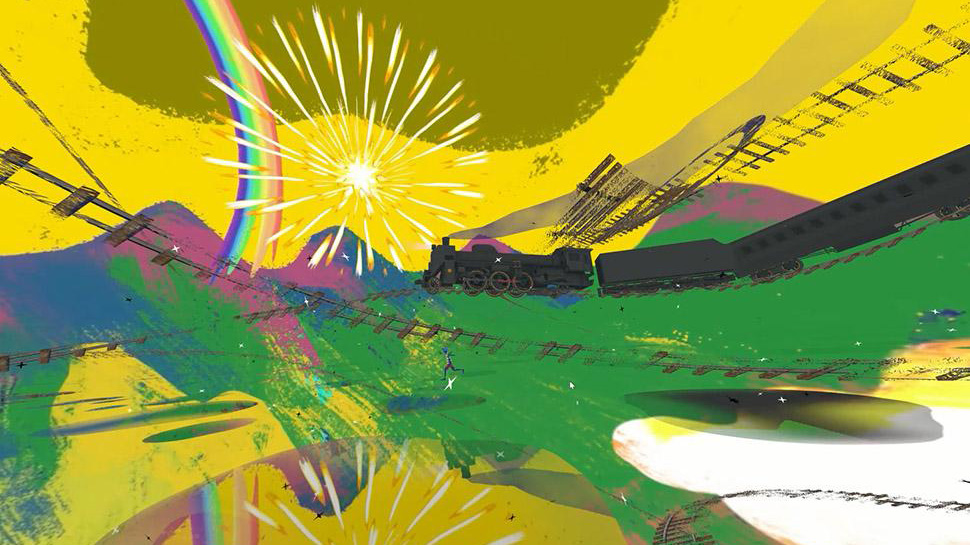
VISION/IMAGINATION
Our avatar is a child, Takashi. We see through his eyes and act like him – or rather, through him. We feel what he feels, think what he thinks, and interact the way he would. At some point, though, Takashi is blinded, and us with him. We end up in darkness. We do hear sounds, but can only make out the silhouettes of people and objects, appearing to us as dark shadows. As we grow more familiar with them, some colour returns to our vision. We can see mom and we can see our best friend, Shinji, who appears to be suffering from autism.
Throughout the VR experience (the creator, Sakudo, mainly makes film on friendship relationships between youths) we move about thanks to a virtual white cane, which we will push against the ground to walk forth. We are denied clear vision and compensate with imagination.
The imaginative immersion into virtual reality confronts the greater theme of human vision in its inception and self-creation: images do not reproduce a portion of reality, like film does, but builds itself on a purely imaginative basis, a process that blends oneiric regression with the significance of language. What contributes to make virtual reality a textual device that can tell a story? Perhaps, at least in great part, the difference between vision and imagination, a difference that the user must make up for by drawing from its experiential and emotional background.
Much like our blind (?) protagonist Takashi…
THANK YOU FOR SHARING YOUR WORLD
COMPETITION
by Yu Sakudo
(Japan, 33’)